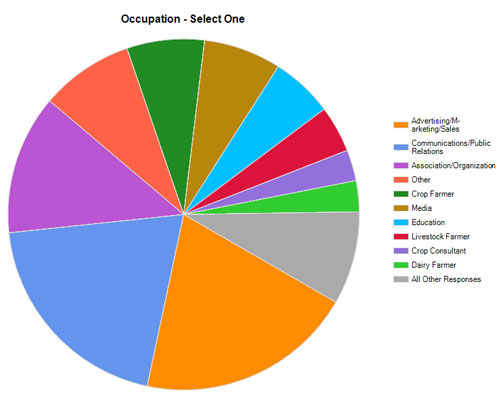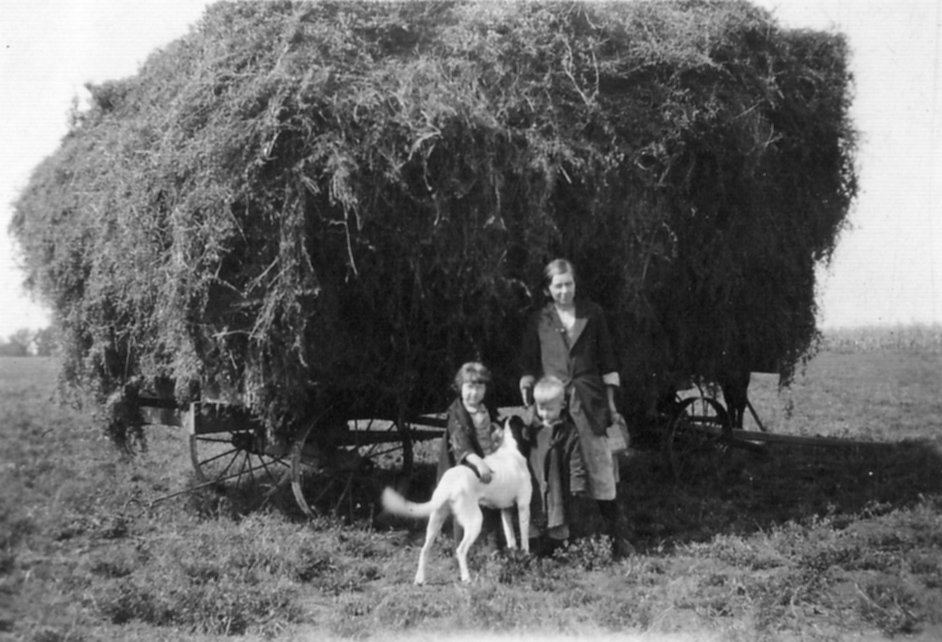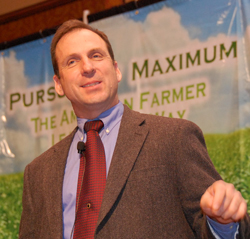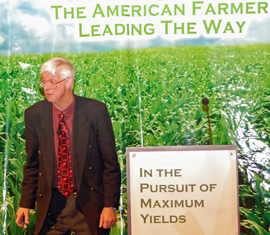 The Iowa Power Farming Show kicked off in Des Moines today and Ag Leader Technology launched some new precision ag products just in time to show them off for the thousands of growers on site. One new product is the updated Mesa Rugged Notepad with the SMS Mobile software package.
The Iowa Power Farming Show kicked off in Des Moines today and Ag Leader Technology launched some new precision ag products just in time to show them off for the thousands of growers on site. One new product is the updated Mesa Rugged Notepad with the SMS Mobile software package.
The Mesa Rugged Notepad is a handheld device that is larger than a PDA but smaller than a laptop and the perfect size for growers to take out to the field. And it’s durable – it can be rained on or dropped and it will stand up to the wear and tear. It also has a glare-proof screen so even on the sunniest of days, you’ll have no problem reading the screen.
The SMS Mobile software includes several key types of in-field information that can be collected and analyzed including Soil Sampling Mode, Crop Scouting Mode, Coverage Mode, Boundary Mode, and General Logging Mode.
I caught up with Michael Vos, Software Sales Manager for Ag Leader to learn more about the SMS Mobile technology that was launched and how it will improve a grower’s operations. Vos gave me a step-by-step tutorial on how one element, the Soil Sampling Mode, worked. You can watch here in this detailed video. Now don’t worry. Even if you’re new to GPS systems and the software, the Ag Leader team will get you set up, trained and started in no time.
SMS Mobile is available right now through the purchase of a Mesa Rugged Notepad kit or you can purchase the SMS mobile and install it on your own device. To learn more, contact Ag Leader or visit their website.
You can check out Ag Leader during the Iowa Power Farming Show in our flickr photo album.
Precision.AgWired.com coverage of the Iowa Power Farming Show is sponsored by:  .
.











 That’s what GROWMARK Agronomy Services Manager Dr. Howard Brown told over 300 farmers and farm consultants meeting in Peoria on Friday for a
That’s what GROWMARK Agronomy Services Manager Dr. Howard Brown told over 300 farmers and farm consultants meeting in Peoria on Friday for a 
 During the hundreds of interviews I’ve conducted with farmers over the years for stories on precision farming tools, I’d have to say that every one of them has touched on the value of their local dealer. Without their set up, training and troubleshooting expertise, adoption of this technology would not be where it is today.
During the hundreds of interviews I’ve conducted with farmers over the years for stories on precision farming tools, I’d have to say that every one of them has touched on the value of their local dealer. Without their set up, training and troubleshooting expertise, adoption of this technology would not be where it is today.
 The event started off with a dynamic presentation by Purdue University economist Dr. Mike Boehlji, who discussed the good news of demand for exports and biofuels, as well as the challenges for meeting that demand.
The event started off with a dynamic presentation by Purdue University economist Dr. Mike Boehlji, who discussed the good news of demand for exports and biofuels, as well as the challenges for meeting that demand.